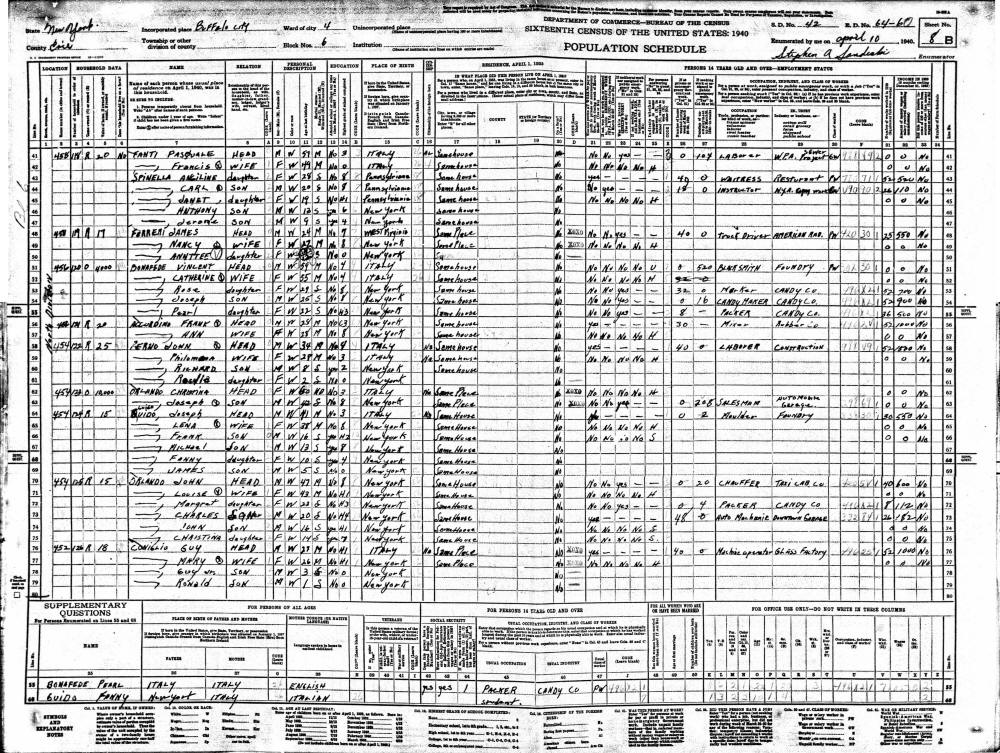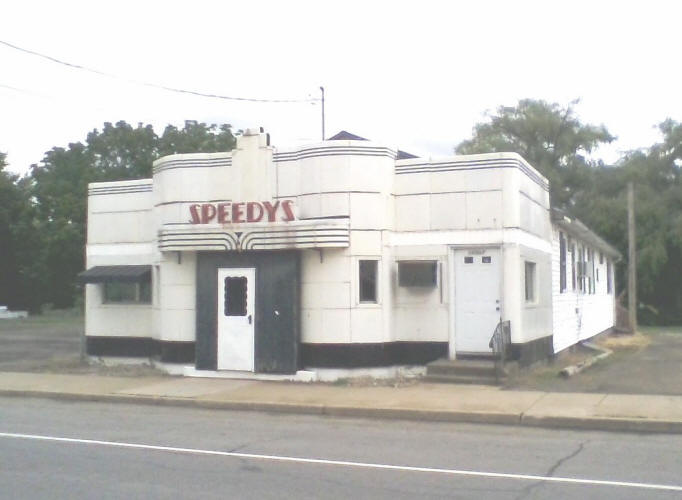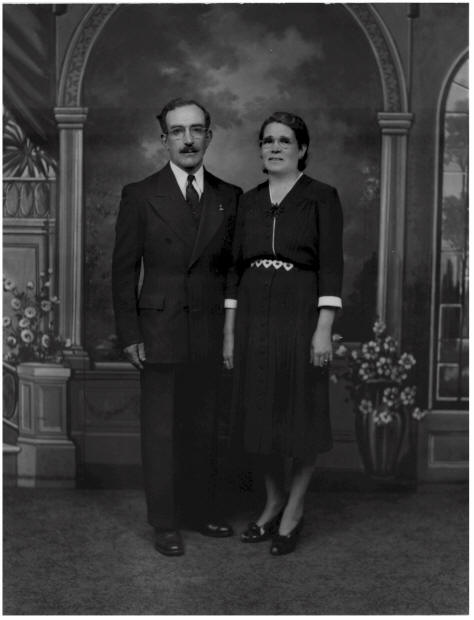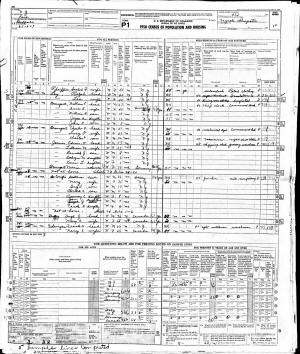

|
|
| Below is an example of the type of story
line that can be archived, as described and presented by CCI's
former
director of Genealogy, Angelo Coniglio, about his father Gaetano and
his family. It starts with an image of his
father's original record of birth with Angelo's take on the event, followed by records tracing the family's Odyssey to
America. We hope to archive similar stories from our members. |
 |
|
|
||
|
|||
|
|
||
|
|
||
|
|||
|
|
| Angelo continues "As
I said, my grandfather was a 'zulfataru', or 'zurfararu', a miner in one of the several sulfur
(zurfaru) mines around
Serradifarcu. My father may have begun working in the
same mine at age 7 or 8, possibly as
a 'carusu', a
'mine-boy', carrying heavy baskets of
sulfur ore, hacked out by the pick-men from the interior of the mine to the
surface, to be smelted. After a few years of this, he may have
'graduated' to being a picuneri, or pick-man. Below is a portion of a rule-book for the Mutual Aid Society of the Sulfur Miners of Serradifarcu, to which both Gaetanos belonged. One of the founders of the society was my grandfather, indicated as 'Coniglio Gaetano, fu Raimondo", that is, son of the late Raimondo." |
 |
|
|
|
 |
|
| "My father worked in the sulfur mine
until he was tewnty years old, from dawn to dusk in the dark, nearly
unbearable heat of the bowels of the earth. When he reached
the age of twenty, he served in the Italian Army.
All male citizens were required to report
when they reached that age. He was in the 'leva di 1889',
that is, the 'draft class of 1889'. This is
his discharge record. The note on his birth record indicates that his father was illiterate,
but Gaetano the younger did sign his Army papers, so he evidently
was the first Coniglio in history who was able to sign his own name. After discharge, he married my mother Rosa Alessi (he called her 'Rosina') who also was born in Serradifalco." |
 |
|
|||
|
|
||
| "The year my father entered the army, his mother Maria Carmela Calabrese died. He served honorably in the Italian Army from 24 July 1910 through 15 August 1912. While he was in service, his older brother Raimondo died, on 12 August 1910, and his father died, on 11 October 1910. In 1912 his older brother Giuseppe left to work in the coal mines of Pittston, Pennsylvania. These family losses fueled my father's decision to leave Sicily for America. Portions of his passport are shown below." |
|
|
|
"On 30 April
1913, four days after his 24th birthday, my father landed at Ellis Island on the SS Berlin
(line 11). He was evidently required to remain on the ship
until the next day, as the arrival date on the manifest is 1 May
1913. Listed as his closest relative left in
Serradifalco was his wife Rosa Alessi.
His destination was his brother Giuseppe
Coniglio at 76 Main Street,
Pittston, Pennsylvania.
On the same voyage as my father was
Angela Alessi (line 5), who left
her father
Leonardo in Serradifalco, and was going to her husband Giuseppe Coniglio at 76 Main Street,
Pittston, Pennsylvania. Angela Alessi was my mother's sister, and Giuseppe Coniglio was my father's brother. No doubt Giuseppe convinced his younger brother to chaperone his (Giuseppe's) wife to America, while the pregnant Rosa waited in Serradifalco for my father to send for her. 76 Main Street in Pittston was an Italian-language bank, and rather than waiting there for my father and Angela to arrive, my uncle Giuseppe probably left cash, train tickets and directions for them to use, to get to Robertsdale, Pennsylvania, where he had found work as a coal miner. My father would join his brother Giuseppe, working in Robertsdale's coal mines. He went from working in a hole in the ground in a mountain town in Sicily to a hole in the ground in a mountain town in Pennsylvania, where his family lived in a rented house owned by the company, and he was paid in company 'scrip' that could only be spent at the company store, where he had to purchase his pick and shovel, dynamite, and other mining equipment." |
|
|
|||
 |
 |
 |
||
|
"My
parents' first
child, a son, was named Gaetano,
not after our father, but after our grandfather Gaetano.
Guy's birth record, below,
shows he was born at Via Prizzi No. 11.
My father had immigrated to the U.S. in 1913, and my mother was
staying with her family on Via Prizzi (she was born at Via Prizzi No. 9).
Extended families often lived in two, three or more adjacent houses.
Here is my brother Guy's birth record, showing that he was born on
21 December 1913. My mother was identified by her maiden name, Rosa Alessi, the custom in Sicily. A woman went by her birth surname her entire life there, but acquiesced to the 'American way' after she immigrated, and became known by her husband's surname." |
| "On 14 December 1914, Rosa, 19, and her son Gaetano, two weeks shy of his first birthday, landed at Ellis Island on the SS Patria. Listed as their closest relative left in Sicily was her father Leonardo Alessi. Their destination was her husband Gaetano Coniglio at P. O. Box 52, Robertsdale, Pennsylvania. According to the custom in Sicily, my mother is listed by her birth surname, Rosa Alessi; her son is listed as Gaetano Coniglio." |
|
"Like many immigrants,
my mother and my brother Guy, listed on their passenger manifest at page 62, line 8, were detained
at Ellis Island because they did not have enough funds to pay their
way to their destination. The manifest shows
that my mother arrived with $25. The 'Record of Detained Aliens' lists 'Alessi, Rose and ch[ild]' The code 'tel $' means they were being telegraphed funds. A note states they were released on 16 December at 12 noon, and that they had been charged for two breakfasts, one dinner [lunch], and two suppers. They had landed on 14 December, so my mother and her baby were held at Ellis Island for two days, until my father either came for them or sent money. My mother had never seen snow in any significant amount before: she had never seen a banana, and threw away the bananas that were given to her by social workers in a food package. We can only imagine what thoughts were going through Rosa's mind, after sailing through contested waters at the start of World War I, to be thousands of miles from her parents, who she would never see again, and hundreds of miles from her husband; just twenty years old with a babe in arms, and unable to speak the language of the strangers around her. But she made it!!" |
|
"In 1917, at age 28,
though he was not yet a citizen, my father was required to register
for the draft for World War I. He was never drafted, possibly because he was
married with a wife and two young sons (Guy and
Leonard), and worked
in what was probably considered an essential industry, at the
Rock Hill Iron and Coal Company in Robertsdale. The photograph shows the Robertsdale Italian Band, assembled for a performance on Columbus Day, 1917. My parents Gaetano and Rosa, and my brothers Guy and Leonard may have been in the crowd that day." |
 |
|
|
"The
1920 U. S. Census (last line) shows 'Guy
Comellia' living at 100 Spring Street,
Robertsdale, Wood Township, Pennsylvania. His
wife 'Rosy Comellia' and their sons
Guy
(named after our paternal grandfather Gaetano),
Leonardo (named for our maternal grandfather Leonardo
Alessi) and
Raimondo (named
after our' father's eldest brother Raimondo Coniglio) are
listed at the top
of the next census page. The Coniglios lived next door to
Calogero and Grazia Asarese Butera, two paisani from
Serradifalco who lived at 96 Spring Street. Robertsdale was a classic coal mining 'company town', and the Sicilian miners were relegated to the neighborhood of Wood, which was called 'Africa' by the locals." |
|
|
|
|
"Several
factors led my father to pull up stakes from Pennsylvania and move
our family to Buffalo: jobs in "king coal" were dying out in
Pennsylvania resulting in layoffs and strikes, with violence against
and by workers; his brother Giuseppe and my aunt Angela had returned
to Sicily; paisani from Serradifalco had moved to Buffalo;
and last but not least, the Ku Klux Klan was waging a terror
campaign in Pennsylvania against immigrants and Catholics. In 1921, shortly after the family moved to 18 Peacock Street in Buffalo's Canal District, my father petitioned for U. S. Naturalization as a U. S. citizen. His first daughter, my sister Carmela (Millie) was born in that tenement, and baptized in the neighborhood's Our Lady of Mount Carmel Church." |
 |
 |
| "My father Gaetano took classes in English and History, and his American citizenship was granted on 16 April 1924, after the family had moved to 309 Myrtle Avenue, directly across the street from the 'La Stella' laundry bleach factory. The fragrance of bleach still awakens my memories of the East Side. 309 Myrtle was the birthplace of three more of my siblings, the twins Concetta (Connie) and Maria (Mary) in 1925, and Antonio (Tony) in 1927. They appear for the first time in the 1930 U. S. Census." |
 |
 |
 |
 |
 |
 |
|
| "Both my father and my brother Guy were members of the 'Società di Mutuo Soccorso Serradifalco', the Serradifalco Mutual Aid Society, a combination labor society/social organization, as was common for emigrants from many other Sicilian towns'. |
 |
| "I came along in 1936, the only one to be born in a hospital, while our nation was in the midst of the Great Depression. My father found work as a caretaker at Welcome Hall, the community center at Myrtle Avenue and Cedar Street, and as a bartender at the Magistrale family’s saloon, called Marconi’s, but the pay was slim, and to augment the family’s income, in summers the whole family would be loaded on a truck with other poor immigrant families, and be taken to Musacchio's farm, on Route 62, just outside the town of North Collins, New York." |
|
|
|
 |
||
|
|
| "At 'the farm', we lived in a one-room shack, with cooking and sleeping areas separated by sheets hung over wires spanning the room. We got our water in buckets from the community pump, and used a smelly outhouse (baccausu) when we could "hold it" no longer. We picked string beans, strawberries, and red and purple raspberries, depending on which crop was ripe. Before I was born, my eight siblings, mother and father worked the fields, and were paid 3 cents for each quart of berries picked. The kids picked about a hundred quarts a day, and my mother about a hundred-fifty, and my father, who came by Greyhound bus on weekends, also picked about a hundred-fifty a day. So on a good day, the family might earn about $33!" |
|
Guy and Len, 1926 |
Tony with a ‘flat’ of raspberries, 1943 |
Ange, 1939 |
| "The number of Coniglio kids at the farm camp varied, as some would stay back for school or other reasons. For example, my brother Leonard ran away with the circus in 1930, depleting the ‘crew’ until he returned the following year; and in 1936, the family became one worker short, as my eldest brother Guy had married a family neighbor, Maria Antonia (Mary) Modica, the year before and remained in Buffalo to work at a glass factory. And another mouth to feed came along in 1936, when I was born. I show up in the 1940 U. S. Census at 309 Myrtle. My brother Guy, married by then, appears on a different census page with his family, living nearby at 452 North Division Street." |
 |
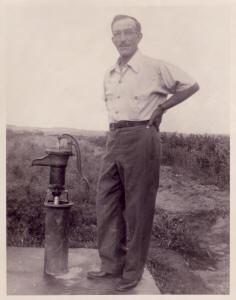 |
|
Tony and 'Pa', 1943 |
Gaetano, 1943 |
| "My father is shown standing by the community water-well pump of Musacchio's farm camp. I recently learned from Sam and Ross Markello (Marchello) of North Collins that he was assigned the responsibility of removing the pump handle each day at sunset and replacing it the next day before sunrise, to prevent unauthorized use of water by the resident laborers. Because of this assignment, he was called "Marshu Tanu" (Master Gaetano)." |
|
"As the youngest, I
think I ate more berries than I picked, but some of my earliest
memories are of 'the farm', and the other families that I got to
know there: the Sciortinos from Efner Street and the Pepes from
Myrtle Avenue. Phil's friend Alphonse 'Foonzi' Pepe remembers
that my father Gaetano loved to watch the camp's sandlot baseball
games, in which Phil usually starred. We also met and were
befriended by families from North Collins; the Fricanos,
Elardos, Manuels, De Carlos, Di Ciccos; families from Valledolmo and especially the Volos, who also originated in Serradifalco,
and whose son Al my sister Millie eventually married. My older brother Phil was a young man at the time, and I remember his stories about he and his friends 'cabareting' in the 1940's at places like 'Speedys' in North Collins." |
|
"In
1944, after years of scrimping and saving from his varied laboring and our three-cents-a-quart
work, my father was able to buy the first home the family ever owned. It was at
973 West
Avenue, a few blocks from Bluebird’s Bakery, and right next
door to the family of Calogero Butera and Grazia Asarese, fellow
immigrants from Serradifalco, who had lived next door to our family
back in Robertsdale. .Sadly, our joy at being in our own home was cut short on July 4, 1944, when my father was struck and killed by a hit and run driver on the corner of West Ferry and Niagara Street." |
 |
| "But by buying that house on West Avenue, Gaetano had provided for Rosa and their family, and through his work ethic, frugality and passion to save, he had given us all a valuable example that we have tried to emulate throughout our lives." |
| "Guy married Mary Modica in 1935. By 1950, Leonard, Connie, Phil and I still lived with my widowed mother on West Avenue. Millie had married Al Volo and lived in North Collins; and Ray had married Marion Cappellano. The 1950 U. S. Census recorded the family living at varied addresses. In the following years, Phil married Betty Hinton, Connie wed Don Miller; Mary wed Fiore Denisco, and after being widowed she married Frank Sowa; Tony married Franny Knickerbocker and I married Angie Bongiovanni. |
 |
 |
 |
|||||
|
|
|
|
| To this date in early 2024, those two Sicilian immigrants, the only ones from their respective families to settle in the U. S., were responsible for a hundred and forty-five descendants as their heritage: many of whom attend the annual family picnics, which first were held seventy years ago." |
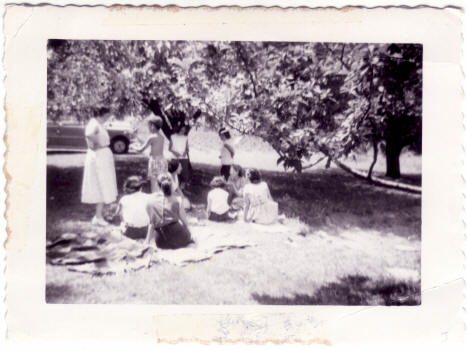 |
 |
|
1954 Family Picnic at Millie and Al's in North Collins |
2023 Family Picnic at Akron Falls Park, after missing three years due to the pandemic |
|
|
|
The Story
Booth is still being staffed, and equipped with recording and scanning gear.
Watch this space to learn when you'll be able to arrange an appointment at the CCI Story Booth, to have YOUR ancestors' story preserved for posterity. Meanwhile, if you'd like to be placed on a waiting list to give your family's history when the Story Booth is ready, leave your name and contact information with CCI Executive Director Lianna Tatman, at lianna.tatman@ccibuffalo.org |














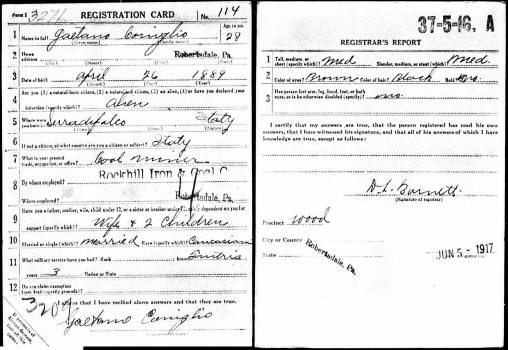
_small.jpg)











